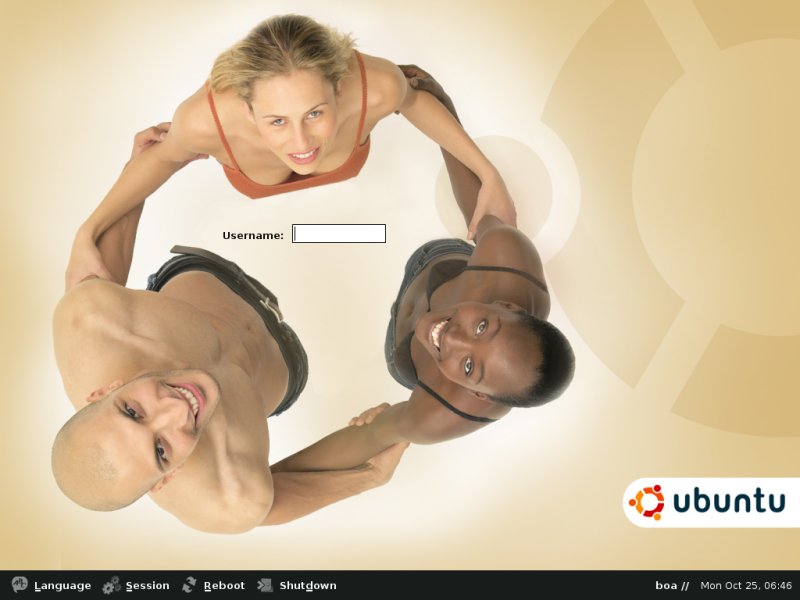What does Ubuntu want to be when it grows up?

Once upon a time I knew exactly what Ubuntu was. Built on top of Debian Linux, it was the most popular Linux desktop around. Today, Ubuntu is in the clouds, on servers, tablets and smartphones, and, oh yes, it's still on the desktop. By spreading its energy in so many directions it's hard to see what Canonical, Ubuntu's parent company, really wants from Ubuntu. So what exactly is Ubuntu today? Well, here's my overview of Ubuntu 2012.
First, Ubuntu is still very popular on the desktop. It may no longer, however, be the most popular desktop Linux. Mint, which is built on Ubuntu, is arguably the desktop Linux of choice for experienced Linux users.
That's because Ubuntu switched its interface from the popular GNOME 2.x style desktop to the more beginner friendly Unity interface. Now, Ubuntu is getting ready to switch its interface again to an even more entry-level user friendly interface: Head-Up Display (HUD).
A first look at Ubuntu Linux's Head-Up Display (Gallery)
At the same time, Ubuntu has decided to abandon its KDE Linux distribution: Kubuntu. Kubuntu will still be around, as Kubuntu developer Jonathan Riddell wrote but "in the same way as the other community flavors such as Edubuntu, Lubuntu, and Xubuntu." That is to say, Ubuntu will supply software resources but no developer funding to keep Kubuntu afloat.
This comes as no surprise since, as Riddell admits, "it has not taken over the world commercially and shows no immediate signs of doing so despite awesome successes." So moving forward, Ubuntu is now fully committed to only its GNOME-based HUD interface.
At the same time though, Ubuntu is also trying to make a stronger play for the business desktop. Canonical recently released the Ubuntu Business Desktop Remix. This is a version of Ubuntu, which is based on Ubuntu 11.10. This edition will come with five years of support. It includes the Open JDK 6 Java run-time environment along with some proprietary software such as Adobe Flash Plugin and VMware View.
Some users object to these proprietary programs, but Mark Shuttleworth, Canonical's founder, defends this move. Shuttleworth wrote, "Everything in the remix is available from the standard Software Centre. ... No secret sauce for customers only; we're not creating a RHEL (Red Hat Enterprise Linux), we already have an enterprise-quality release cadence called LTS (Long Term Support) and we like it just the way it is. This is a convenience for anyone who wants it. Having a common starting point, or booting straight into a business-oriented image makes it easier for institutional users to evaluate Ubuntu Desktop for their specific needs."
These changes have lead many long time Ubuntu users to switch to Linux Mint, with its new GNOME 2.x style Cinnamon interface. That said, Ubuntu still remains popular with many users as its recently showing as top desktop distribution on the LinuxQuestions annual user survey shows. My question is, as Canonical divides its attention in so many other directions will it be able to keep its popularity
A walk through Mint Linux's new/old Cinnamon desktop (Gallery)
For example, Canonical also wants to compete with Red Hat and SUSE in the server space. Ubuntu has been making serious efforts as a server since 2009 . In some server spaces, Ubuntu has done very well for itself.
For example, Ubuntu is the most popular Linux distribution on the Amazon Elastic Compute Cloud. Ubuntu, which is now using OpenStack for its own cloud efforts, has also been making progress in the private cloud market. However, Ubuntu has not been successful in getting corporate customers to switch from RHEL or SUSE to Ubuntu.
At the same time, most of Canonical's efforts seem to be going to smartphones, tablets, and TVs. The idea here is to use the Unify/HUD interface to provide a universal interface for devices.
A quick look at Ubuntu TV (screenshots)
This is all well and good. I can see Unity making a fine tablet or TV interface. I can also see Unity/HUD becoming a popular interface for the desktop. I know people who want to get their hands dirty with Linux's controls don't care for it, but then Mac OS X has shown that there are far more users who want an easy-to-user interface than know the ins and outs of, in Apple's case, BSD Unix. I can also see Ubuntu continuing to do well on the cloud. I'm not at all sure it can make great gains on the small business or enterprise server space.
But, and here's where I come to a problem, I don't know that Canonical can execute all these plans at once. Dropping Kubuntu, whle painful to some users, was a smart move. Still, the company isn't that large to begin with and it's recently undergone a major reorganization. Individually I see most of these changes as being for the best. Collectively though... I don't know. I fear Canonical has bitten off more than it can chew. What do you think?
Related Stories:
Shuttleworth: Don't blow a gasket over enterprise Ubuntu remix
Mint's Cinnamon: The Future of the Linux Desktop? (Review)
Linux users cautiously optimistic about Ubuntu's Head-Up Display desktop
